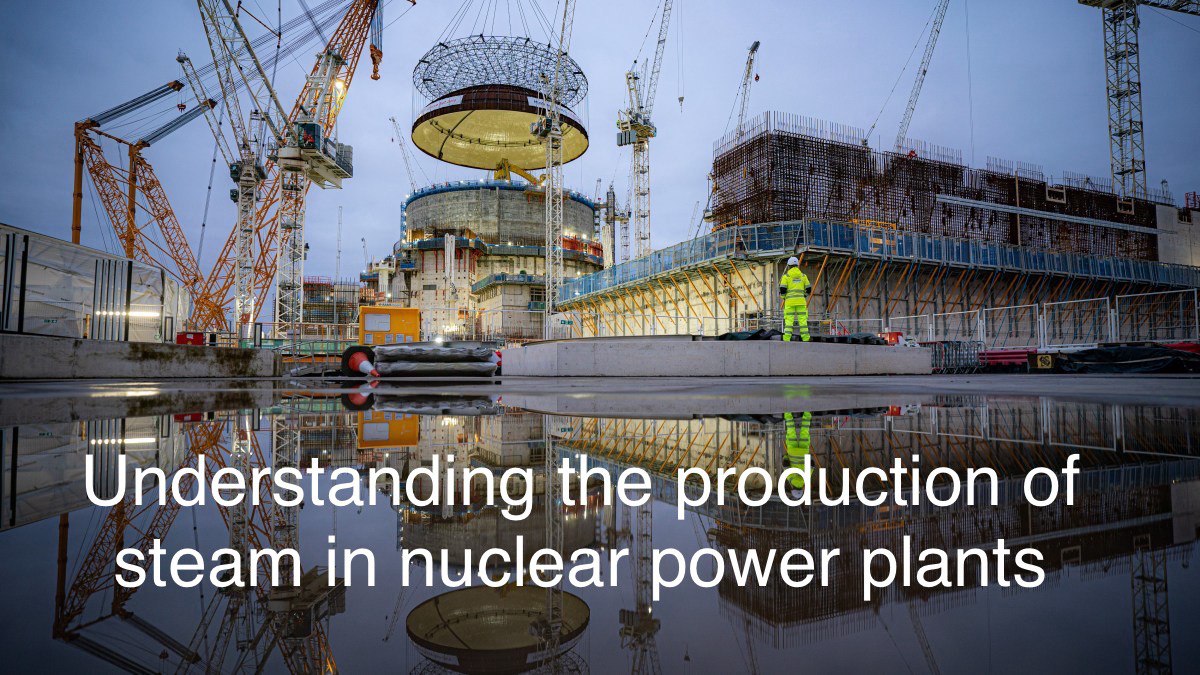Global energy demands through nuclear power advancements, part 2 of 4.
Nuclear power plants stand as the epitome of efficient and reliable electricity production, boasting a complex network of systems and processes aimed at harnessing the immense power of nuclear fission. Among the critical components of this intricate setup lies the generation of steam, a pivotal element driving the turbines that ultimately yield electrical power. This technical article delves into the mechanisms behind steam production in nuclear power plants, elucidating its chemical composition, regulatory considerations, and the challenges inherent in ensuring its cleanliness and safety.
Si tu habite au Québec et voulez vendre ou acheter une maison/condo/triplex/duplex, appeler moi et je serais disponible a vous aider. Permit commercial a venir.
Reside in Quebec? Want to buy or sell a house/condo/triplex/duplex, give me a call, your trusted Real estate broker, commercial license to come.

At the heart of every nuclear power plant lies the reactor core, where controlled nuclear fission reactions occur, generating an unprecedented amount of heat. This heat serves as the primary energy source for the steam generation process. Within the reactor core, nuclear fuel assemblies, typically composed of uranium or plutonium isotopes, undergo controlled chain reactions, releasing thermal energy in the form of heat.
The transfer of this heat to the water coolant circulating within the reactor initiates the steam generation process. Water, circulating through a series of pipes known as the primary loop, absorbs thermal energy from the reactor core, reaching temperatures high enough to undergo phase transition into steam. This steam, characterized by its high temperature and pressure, is then directed towards the turbines through a separate secondary loop.

NEW: Betweenplays “Players Dugout“, Our very own Stockmarket, Crypto Chatroom! Click on image!
Stay Tuned as we prepare for the release of our App. created by our new team of coders out of Silicon Valley, we plan on being the next success story!
Contrary to common misconceptions, the steam produced in nuclear power plants is inherently clean, composed solely of water vapor molecules (H2O). Unlike conventional fossil fuel-based power generation, which releases significant amounts of carbon dioxide and other greenhouse gases into the atmosphere, nuclear power plants emit no such pollutants during the steam generation process. However, ensuring the cleanliness and safety of the steam involves stringent adherence to regulatory guidelines and environmental standards.
Nuclear power plants operate under rigorous safety protocols and environmental regulations to mitigate any potential emissions, including radioactive contaminants. Specialized containment structures and filtration systems are employed to ensure that any radioactive particles or gases released during the steam generation process are effectively contained and filtered before discharge into the atmosphere.
Once directed towards the turbines, the high-pressure steam exerts force on turbine blades, causing them to rotate at high speeds. This rotational motion is then transferred to the generator shaft, driving the generator to produce electrical energy. This electrical energy is subsequently transmitted through the power grid, providing electricity to homes, businesses, and industries.
Subscribe to our newsletter!
Despite the inherent cleanliness and efficiency of steam production in nuclear power plants, challenges persist in the realms of safety, waste management, and public perception. Ongoing technological advancements and stringent regulatory oversight continue to enhance the safety and efficiency of nuclear power generation, ensuring that the benefits of clean, reliable electricity remain accessible to society while addressing concerns regarding safety and environmental impact.
In conclusion, the production of steam in nuclear power plants represents a sophisticated interplay of nuclear physics, thermodynamics, and engineering principles. While the steam itself is clean in terms of its chemical composition, meticulous attention to safety protocols and environmental regulations is imperative to mitigate any potential risks associated with nuclear power generation.
Part 2 of a 4 series on nuclear fusion, click link for part 3 (click here)


